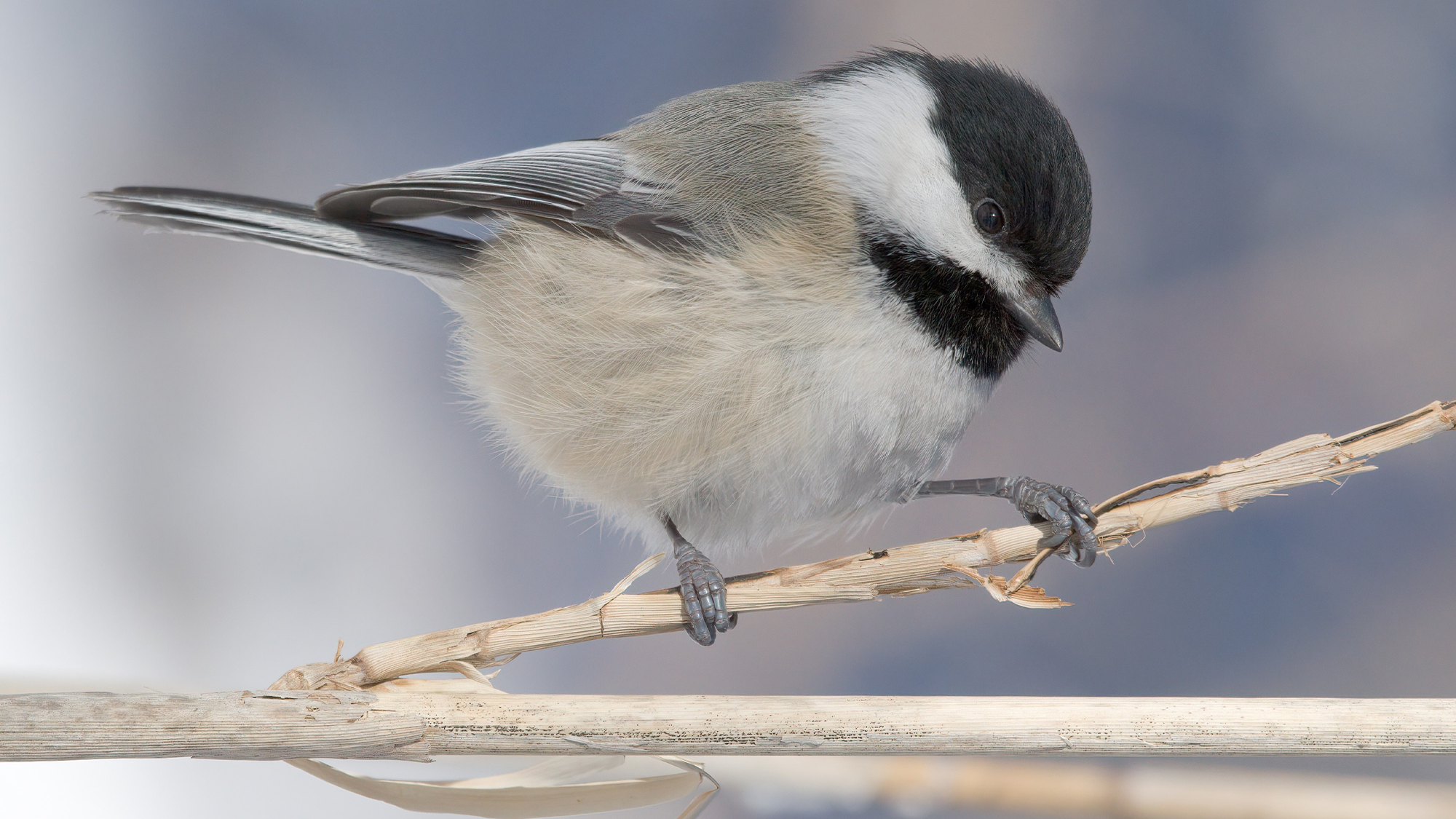

The brain’s ability to create and store memories is pretty mysterious. Memory can’t always be trusted, and yet it is crucial to survival. Remembering where food is stored during lean winter months is a necessity for many animals, including black-capped chickadees. New research suggests that these birds with impeccable memories use a system similar to something you’ve probably seen at the grocery store. They appear to memorize each food location using brain cell activity that functions similar to how a barcode works. The findings are described in a study published March 29 in the journal Cell.
“We see the world through our memories of objects, places and people,” study co-author and Columbia University neuroscientist Dmitriy Aronov said in a statement. “Memories entirely define the way we see and interact with the world. With this bird, we have a way to understand memory in an incredibly simplified way, and in understanding their memory, we will understand something about ourselves.”
‘Memory geniuses’
Scientists have long known that the brain’s hippocampus is necessary for storing episodic memories like where a car is parked or food is kept. It’s been more difficult to understand how these memories are encoded in the brain, since it’s hard to know what an animal might be remembering at a particular time.
To work around this problem, the new study looks at black-capped chickadees. Arnov calls these birds “memory geniuses” and masters of episodic memory. Most chickadees live in colder places and don’t migrate in the winter like other birds. Their survival hinges on remembering where they hid food in the summer and fall, with some birds making up to 5,000 of these stashes every day.
[Related: Dogs and wolves remember where you hide their food.]
“Each cache is a well-defined, overt, and easily observable moment in time during which a new memory is formed,” said Aronov. “By focusing on these special moments in time, we were able to identify patterns of memory-related activity that had not been noticed before.”
A hippocampal ‘barcode’
In the study, the team built indoor arenas in a lab that were inspired by the birds’ natural habitats. During the experiments, a black-capped chickadee instinctively hid sunflower seeds in the holes in the arenas, while the team monitored the activity in the bird’s hippocampus, using an implanted recording system. This device allowed the team to monitor the brain while the birds moved about freely and was removed between recording sessions. At the same time, six cameras recorded the chickadees as they flew and an artificial intelligence system that automatically tracked them as they stashed and retrieved seeds.
“These are very striking patterns of activity, but they’re very brief—only about a second long on average,” study co-author and postdoctoral research fellow Selmaan Chettih said in a statement. “If you didn’t know exactly when and why they happened, it would be very easy to miss them.”

They saw that the hippocampal neurons fired in a unique pattern each time the chickadees stored food in a certain location. Each memory was tagged with a unique pattern in the hippocampus that lit up when the bird retrieved the cached food. The team referred to these patterns as barcodes since they are very specific labels of individual memories.
“For example, barcodes of two different caches are uncorrelated even if those two caches are right next to each other,” said Aronov.
These barcode-like patterns also occur independently from the other activity of hippocampal neurons called place cells. These cells encode memories of locations in the brain. Each of these pseudo barcode stayed distinct, even for the stashes that were hidden at the same place, but at different times, or at nearby stashes that were made in quick succession.
“Many hippocampal studies have focused on place cells, with the Nobel Prize awarded for their discovery in 2014,” said Aronov. “So the assumption in the field was that episodic memory must have something to do with changes in place cells. We find that place cells don’t actually change when birds form new memories. Instead, during food caching, there are additional patterns of activity beyond those seen with place cells.”
What this could mean for humans
According to the team, the question of whether and how these patterns are being used by the brain to drive behavior remains. It is not fully clear whether the chickadees activate the ‘barcodes’ and use those memories to make decisions about where to go next.
[Related: Do cats and dogs remember their past?]
In future studies, the team hope to see if the birds activate these barcode-esque patterns when looking for caches in more remote spots or in more complicated environments. They also plan to record brain activity while the birds make choices about which cache to visit.
The team is also eager to know if this barcoding tactic is in widespread use among other animals–ourselves included, since memory is a critical part of the human experience.
“If you think about how people define themselves, who they think they are, their sense of self, then episodic memories of particular events are central to that,” said Chettih. “That’s what we’re trying to understand.”
